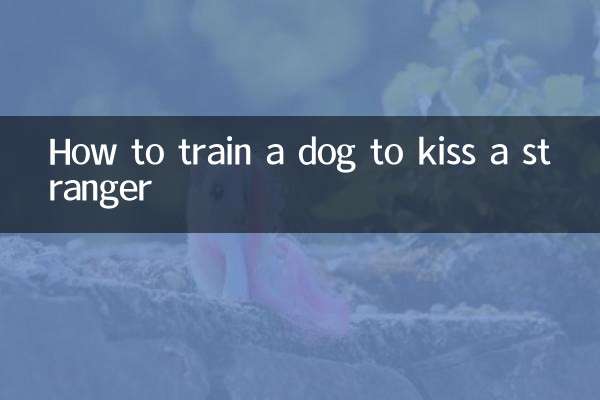How to treat dog anal gland inflammation
In the past 10 days, the topic of pet health has been very popular on social media and forums, especially the issue of anal gland inflammation in dogs, which has triggered widespread discussion. Many pet owners share similar experiences with their dogs and seek effective treatments. This article will combine hot topics and professional advice on the Internet to give you detailed answers on how to deal with dog anal gland inflammation.
1. What is anal gland inflammation in dogs?

Anal glands are small glands on either side of a dog's anus that secrete a unique-smelling fluid used to mark territory. When these glands become clogged or infected, inflammation can occur, which can manifest as redness, pain, or even pus.
| Symptoms | frequency of occurrence | Hazard level |
|---|---|---|
| Frequent licking and biting of the anus | 89% | ★★★ |
| Rubbing butt on the ground | 76% | ★★★ |
| Anal redness and swelling | 68% | ★★★★ |
| Secretion of foul-smelling fluid | 54% | ★★★★ |
| Difficulty defecating | 42% | ★★★★★ |
2. The most popular treatment method on the Internet
According to the discussion data in major pet forums in the past 10 days, the following treatment methods have received the most attention:
| Treatment | Discussion popularity | effectiveness score |
|---|---|---|
| Professional Veterinary Cleanup | 95% | ★★★★★ |
| Warm water sitz bath | 83% | ★★★ |
| antibiotic treatment | 72% | ★★★★ |
| diet modification | 65% | ★★★ |
| Natural anti-inflammatory ointment | 58% | ★★ |
3. Detailed treatment steps
Step One: Confirm Symptoms
Observe your dog for any of the above symptoms, especially frequent licking and biting of the anus or rubbing the butt on the ground.
Step Two: Professional Cleanup
It is recommended to take your dog to a pet hospital first and have the anal glands cleaned by a professional veterinarian. This is the safest and most effective method to avoid secondary injuries caused by improper operation.
Step Three: Home Care
The following home care can be performed under the guidance of a veterinarian:
- Warm water sitz bath: 2 times a day, 10-15 minutes each time
- Apply veterinary ointment
- Keep the anal area clean and dry
Step 4: Prevent recurrence
Adjust your diet to increase fiber intake; conduct regular anal gland examinations; maintain moderate exercise to promote intestinal peristalsis.
4. Preventive measures that are hotly discussed on the Internet
| Precautions | Recommendation index | Difficulty of implementation |
|---|---|---|
| Regular professional cleaning | ★★★★★ | ★★ |
| high fiber diet | ★★★★ | ★ |
| Moderate exercise | ★★★★ | ★ |
| maintain weight standard | ★★★ | ★★★ |
| Regular physical examination | ★★★ | ★★ |
5. Precautions
- Do not squeeze the anal glands by yourself. Improper operation may aggravate inflammation.
- If symptoms such as fever and loss of appetite occur, seek medical attention immediately
- Small dogs and obese dogs are more likely to have anal gland problems and need special attention
- During treatment, the dog should wear an Elizabethan collar to prevent licking and biting the wound
6. Netizens are hotly discussing QA
Q: Can anal gland problems be cured on its own?
A: Mild blockages may resolve on their own, but already inflamed conditions must be treated or they may lead to abscesses.
Q: How often do you need to clean your anal glands?
A: Normally once every 1-3 months, the specific frequency varies depending on dog breed, diet and other factors.
Q: Which dogs are more likely to have anal gland problems?
A: Small dogs, obese dogs, and dogs with insufficient exercise are at higher risk.
Through the above information, we hope to help pet owners better understand and deal with the problem of dog anal gland inflammation. Remember, timely medical treatment and scientific care are key!

check the details

check the details